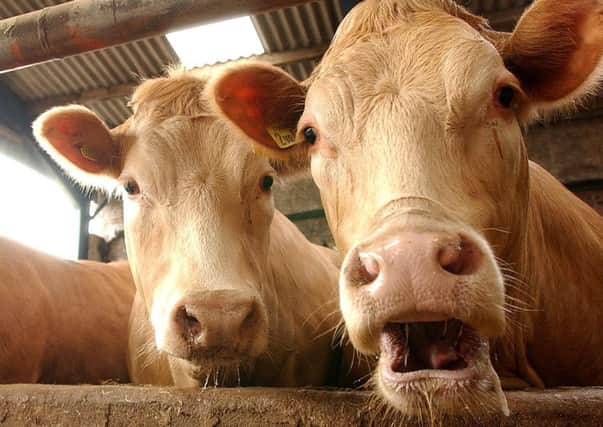Farmers right to have a beef with efficiency scheme
This article contains affiliate links. We may earn a small commission on items purchased through this article, but that does not affect our editorial judgement.


Offering the industry support to allow it to utilise some of the country’s top-flight research facilities to help improve the health and efficiency of our beef production in an environmentally and sustainable fashion – while also reducing the industry’s carbon foot print – was surely a winning combination.
But despite – or perhaps because of – these high ideals, things seemed to go wrong from the start. And while the farming community might be growing used to delayed starts and extended deadlines, the hiatus between the idea being floated and its eventual launch saw interest dwindle.
Advertisement
Hide AdAdvertisement
Hide AdFollowing this slow and unsteady start, like a dozy bull calf that doesn’t want to sook, the scheme has somehow lacked the will to get up on its feet.
The revelation that the payment of £32 per qualifying animal would be limited to the first three years of a five-year commitment didn’t help – and this was followed swiftly by the hopelessly off-putting bureaucratic application form.
However, the intervention of NFU Scotland – which, despite some misgivings of its own, could see value in the scheme – managed to convince producers that the wording was needlessly complex and, despite the doom-laden prose, it would probably all work out fine in the end.
So, after an extension to the application period, by the middle of the summer we were told around half the national herd had signed up to the scheme – and those who had done so waited to hear what they had to do next.
But the autumn calf sales had come and gone and winter set in before there was any update and many of the animals which should have been tissue sampled under the scheme had been sold off their farm of birth.
It was only last week that the Scottish Government said that tissue sampling tags would be delivered before the end of the year and that producers could go online to find which animals they had to test.
However, the technical issues which had delayed this element of the scheme seem to hark back to the same sort of public tendering process which dogged the now infamous roll-out of the department’s IT system for delivering farm support.
And while you might have hoped that there would have been a stricter financial grip now, the application for tenders indicated that the expected costs of running the tissue sampling contract lay somewhere “between £750,000 and £5m”.
Advertisement
Hide AdAdvertisement
Hide AdIt also became clear last week that the advisory and carbon auditing elements of the scheme remain, like so much CO2, up in the air – as these are also out to tender – with the contractor not likely to be in place until mid-2017. While the runaway costs stemming from the public tendering process for the IT system are now notorious, a question might hang over how much of the BES’s £45m will actually go to the farming sector.
Mental arithmetic might not be my strong point – but, as the loan payment blunder revealed last week shows, it’s probably not the department’s either. Multiplying the estimated 180,000 animals qualifying for BES support by £32 a head over the course of three crops of calves gives a spend of just over £17m – well short of the scheme’s £45m headline figure.
When questioned about these missing millions, the Scottish Government line was that “farmers will benefit from the overall BES budget of £45m over three years, in a number of ways. This includes direct payments, free advisory services, including one to one support, and the genotyping tests”.
But, if just over a third of the budget actually makes its way to producers’ pockets, farmers might surely be questioning the efficiency of the beef efficiency scheme.
